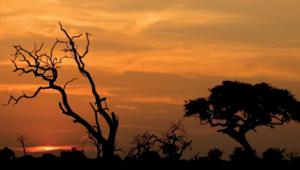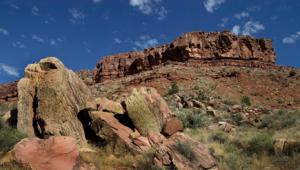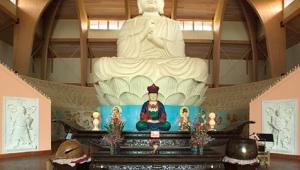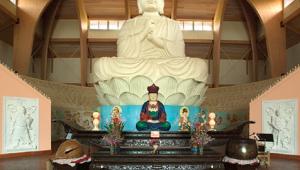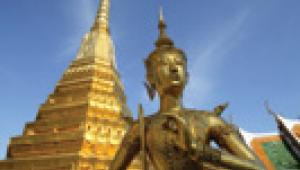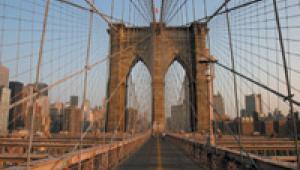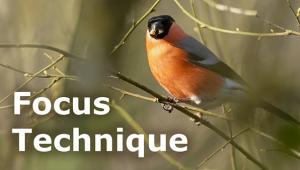Globetrotter
Goin’ Digital On Safari; Africa Offers The Ultimate Wildlife Experience
Beryl Markham begins West with the Night, her wonderful and enthralling book about her adventures as a bush pilot in East Africa in the mid-1930s, with the question, "How is it possible to bring order out of memory?"
 |
|
|
As I began to write this text, I was halfway through an incredible photo safari
in Botswana in the fall of 2004. I was with my photographer friend Doug McKague
(whom I met on a Shutterbug workshop in Miami's South Beach). I am beginning
to understand how Ms. Markham felt about her experiences. Already, we observed
the lion's ritual of mating throughout an afternoon. We also studied a
pride of lions hunting for hours through rugged terrain. And, we came upon a
surprised male lion drinking from the lodge's swimming pool.
With the help of our expert guides, Doug and I had been fortunate to see cheetahs
basking in the late afternoon sun, leopards silently stalking prey, huge herds
of elephants slumbering along the riverfront, giraffes peering at me from behind
a treetop, zebras prancing in the late afternoon sun, and warthogs, kudu, sable,
antelope, and impala darting away from predators.
 |
In addition to the wildlife, we had witnessed some of the most spectacular
sunsets, sunrises, and moonrises I have ever seen in my 24 years of traveling
around the planet. And, we shared good laughs, recounting when our guide had
to chase an elephant off the dirt airstrip before our small plane could take
off.
As memories of the images on my camera's LCD monitor rush past, I am trying
to bring order to the experience of my African photo safari. I am also trying
to organize the photographs, so I can share them with my family, friends, and
you.
While writing more about my Botswana adventures is for another time, for now
I'll share some of my favorite photographs from that trip along with some
tips for digital wildlife photography.
Main Ingredients For Wildlife Photography
This picture of lions in courtship illustrates the main ingredients needed for
successful wildlife photography: an expert guide who can find the animals for
you, luck in finding wild animals, a good shooting position, a pleasing background
and foreground, a knowledge of one's equipment, and patience--sometimes
we had to wait for days to get a perfect shot.
This picture, and all of the pictures in this column, was taken with a Canon
EOS-1D Mark II digital SLR and a 100-400mm IS (Image Stabilization) zoom lens.
This is my prime lens for wildlife photography.
Some readers may ask why I did not use a much heavier and faster 300mm or 400mm
f/2.8 lens and a tripod to steady my camera. The answer is simple: a zoom lens,
which is lighter and smaller, offers much more composition flexibility when
I am required to stay in the safari vehicle, out of harm's way.
Of course, a 1.4x or 2x tele-converter would be a good accessory to use with
telephoto lenses and telephoto zooms if you can't get as close as you'd
like to a subject. Note that some 1.4x tele-converters are sharper than 2x tele-converters
offered by the same manufacturer.
Getting back to a good position, try to stay at a safari camp that goes off-road.
That way, you'll get closer to the animals. Also keep in mind that in
the national parks, you can't drive off-road in most places.
Carefully Choose The ISO Setting
Digital images contain digital noise, what we call grain in a traditional print
or slide. As the ISO setting increases, so does the digital noise, which is
most visible in shadow areas and sometimes in the sky. I shot this moonrise
picture with my camera set at ISO 800.
 |
As a general rule, we should try to use the lowest possible ISO setting for
the existing lighting conditions, because we usually want to minimize the noise
in our pictures. On sunny days, we may be able to use low ISO settings, 100
or 200. As the light level gets lower, we often need to boost the ISO setting.
On overcast days, we may need to shoot at ISO 400. When the sun gets low in
the sky, we may need to shoot at ISO 800 or higher.
If we are shooting with a 300mm or 400mm non-stabilized telephoto lens on a
sunny day, we may need to use a higher ISO for a faster shutter speed to avoid
adding camera shake to our images or a smaller f/stop for more depth of field.
Each situation should be evaluated separately.
When in doubt about the ISO setting, ask yourself this question: Would I rather
have a noisy picture, which may be acceptable and which may be able to be enhanced
in the digital darkroom, or do I want to risk a blurry picture caused by camera
shake? I really find blurred subjects unacceptable. You may also want to ask
yourself if noise, which can be added with the Film Grain feature in Adobe's
Photoshop and Photoshop Elements, can actually enhance a picture.
See The Light
When we take a picture with our digital camera, we are recording light on the
image sensor. With no light, we would have
no picture.
 |
Sunny days and overcast days offer different types of lighting conditions.
So as not to be disappointed with the lighting in our pictures, we need know
to "see the light" so we can exposure the scene correctly and set
the white balance accordingly.
On an overcast day, without any harsh shadows in the scene, pictures tend to
look a bit soft, which can be pleasing, too.
When we shoot on sunny days, our pictures have more "pop," due to
the strong shadows and increased contrast created by
direct sunlight. On sunny days, I try to compose my picture so the light is
falling on the subject's face. That's what I did for this picture
of a leopard.
In addition to seeing the quality of light, we need to see the highlight and
shadow areas of a scene--something our cameras can't see as accurately
as our eyes can. Of course, we can rescue the highlight and shadow areas of
a scene (to some degree) in Photoshop.
- Log in or register to post comments


